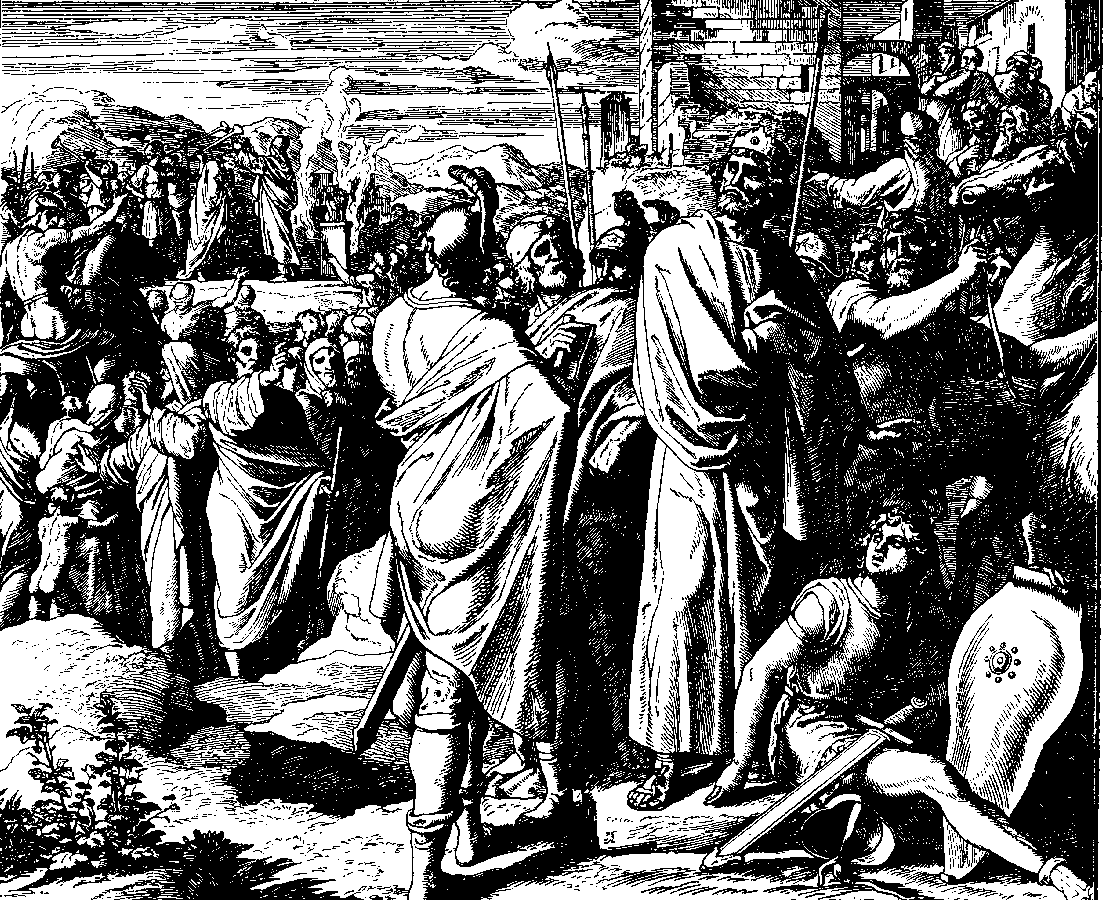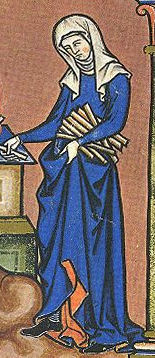|
Etam (Bible)
EtamEtam is distinct from the similar name Etham, spelled "" in Hebrew ( he, עיטם) is a proper name in the Bible. There are five references to the name Etam in the Hebrew Bible: Person * Etam is mentioned in 1 Chronicles 4:3 as a descendant of Judah, likely a son of Hur. Etam is the father of Jezreel, Ishma, Idbash and their sister Hazzelelponi. Places *Etam (biblical town), as referenced in 2 Chronicles 11, was located southwest of Bethlehem near Tekoah. * A village in the tribe of Simeon (1 Chronicles 4:32). *Rock of Etam Rock of Etam is mentioned as a rock with the cave where Samson hid after smiting the Philistines "hip and thigh with a great slaughter." It was in Judah but apparently in the low hill country (same place as the town of Etam) . The rocky hill on wh ..., a rock where Samson hid. References Hebrew Bible cities Hebrew Bible people {{Hebrew-Bible-stub ... [...More Info...] [...Related Items...] OR: [Wikipedia] [Google] [Baidu] |
Etham
The Stations of the Exodus are the locations visited by the Israelites following their exodus from Egypt, according to the Hebrew Bible. In the itinerary given in Numbers 33, forty-two stations are listed, although this list differs slightly from the narrative account of the journey found in Exodus and Deuteronomy. Biblical commentators like St Jerome in his ''Epistle to Fabiola'', Bede (''Letter to Acca: "De Mansionibus Filiorum Israhel"'') and St Peter Damian discussed the Stations according to the Hebrew meanings of their names. Dante modeled the 42 chapters of his ''Vita Nuova'' on them. Sources According to the documentary hypothesis, the list of the Stations was originally a distinct and separate source text. Proponents of this hypothesis believe that the redactor, in combining the Torah's sources, used parts of the Stations list to fill out awkward joins between the main sources. However, a slightly variant version of the list appears in full at Numbers 33, and several ... [...More Info...] [...Related Items...] OR: [Wikipedia] [Google] [Baidu] |
Hebrew Language
Hebrew (; ; ) is a Northwest Semitic language of the Afroasiatic language family. Historically, it is one of the spoken languages of the Israelites and their longest-surviving descendants, the Jews and Samaritans. It was largely preserved throughout history as the main liturgical language of Judaism (since the Second Temple period) and Samaritanism. Hebrew is the only Canaanite language still spoken today, and serves as the only truly successful example of a dead language that has been revived. It is also one of only two Northwest Semitic languages still in use, with the other being Aramaic. The earliest examples of written Paleo-Hebrew date back to the 10th century BCE. Nearly all of the Hebrew Bible is written in Biblical Hebrew, with much of its present form in the dialect that scholars believe flourished around the 6th century BCE, during the time of the Babylonian captivity. For this reason, Hebrew has been referred to by Jews as ''Lashon Hakodesh'' (, ) since a ... [...More Info...] [...Related Items...] OR: [Wikipedia] [Google] [Baidu] |
Bible
The Bible (from Koine Greek , , 'the books') is a collection of religious texts or scriptures that are held to be sacred in Christianity, Judaism, Samaritanism, and many other religions. The Bible is an anthologya compilation of texts of a variety of forms originally written in Hebrew, Aramaic, and Koine Greek. These texts include instructions, stories, poetry, and prophecies, among other genres. The collection of materials that are accepted as part of the Bible by a particular religious tradition or community is called a biblical canon. Believers in the Bible generally consider it to be a product of divine inspiration, but the way they understand what that means and interpret the text can vary. The religious texts were compiled by different religious communities into various official collections. The earliest contained the first five books of the Bible. It is called the Torah in Hebrew and the Pentateuch (meaning ''five books'') in Greek; the second oldest part wa ... [...More Info...] [...Related Items...] OR: [Wikipedia] [Google] [Baidu] |
Hebrew Bible
The Hebrew Bible or Tanakh (;"Tanach" ''Random House Webster's Unabridged Dictionary''. Hebrew: ''Tānāḵh''), also known in Hebrew as Miqra (; Hebrew: ''Mīqrā''), is the Biblical canon, canonical collection of Hebrew language, Hebrew scriptures, including the Torah, the Nevi'im, and the Ketuvim. Different branches of Judaism and Samaritanism have maintained different versions of the canon, including the 3rd-century Septuagint text used by Second-Temple Judaism, the Syriac language Peshitta, the Samaritan Torah, the Dead Sea Scrolls, and most recently the 10th century medieval Masoretic Text, Masoretic text created by the Masoretes currently used in modern Rabbinic Judaism. The terms "Hebrew Bible" or "Hebrew Canon" are frequently confused with the Masoretic text, however, this is a medieval version and one of several ... [...More Info...] [...Related Items...] OR: [Wikipedia] [Google] [Baidu] |
1 Chronicles
The Book of Chronicles ( he, דִּבְרֵי־הַיָּמִים ) is a book in the Hebrew Bible, found as two books (1–2 Chronicles) in the Christian Old Testament. Chronicles is the final book of the Hebrew Bible, concluding the third section of the Jewish Tanakh, the Ketuvim ("Writings"). It contains a genealogy starting with Adam and a history of ancient Judah and Israel up to the Edict of Cyrus in 539 BC. The book was divided into two books in the Septuagint and translated mid 3rd century BC. In Christian contexts Chronicles is referred to in the plural as the Books of Chronicles, after the Latin name given to the text by Jerome, but are also rarely referred to by their Greek name as the Books of Paralipomenon. In Christian Bibles, they usually follow the two Books of Kings and precede Ezra–Nehemiah, the last history-oriented book of the Protestant Old Testament. Summary The Chronicles narrative begins with Adam, Seth and Enosh, and the story is then carried for ... [...More Info...] [...Related Items...] OR: [Wikipedia] [Google] [Baidu] |
Judah (son Of Jacob)
Judah () was, according to the Book of Genesis, the fourth of the six sons of Jacob and Leah and the founder of the Tribe of Judah of the Israelites. By extension, he is indirectly the eponym of the Kingdom of Judah, the land of Judea, and the word ''Jew''. According to the narrative in Genesis, Judah alongside Tamar is the patrilineal ancestor of the Davidic line. The Tribe of Judah features prominently in Deuteronomistic history, which most scholars agree was reduced to written form, although subject to exilic and post-exilic alterations and emendations, during the reign of the Judahist reformer Josiah from 641 to 609 BCE. According to the Christian narrative, he was the ancestor of Jesus. Etymology The Hebrew name for Judah, ''Yehuda'' (יהודה), literally "thanksgiving" or "praise," is the noun form of the root Y-D-H (ידה), "to thank" or "to praise." His birth is recorded at ''Gen.'' 29:35; upon his birth, Leah exclaims, "This time I will praise the LORD/YHWH," with t ... [...More Info...] [...Related Items...] OR: [Wikipedia] [Google] [Baidu] |
Hur (Bible)
Hur (also spelled Chur) ( he, חור) was a companion of Moses and Aaron in the Hebrew Bible. He was a member of the Tribe of Judah. His identity remains unclear in the Torah itself, but it is elaborated in rabbinical commentary. Other individuals named Hur are also mentioned in the Bible. Hur, companion of Moses In the Book of Exodus, Hur is first mentioned as a companion of Moses and Aaron watching the Battle of Rephidim against the Amalekites. He aided Aaron to hold up the hands of Moses when Moses realised that the Israelites prevailed in battle while his hands were raised: "Aaron and Hur stayed up his hands, the one on the one side, and the other on the other side". He is mentioned once more as Moses' staunch ally when he is left in co-charge with Aaron of the Israelites when Moses was away on Mount Sinai. Moses told the people "Aaron and Hur are with you; whosoever hath a cause, let him come near unto them." However, only Aaron is mentioned in the later account of events d ... [...More Info...] [...Related Items...] OR: [Wikipedia] [Google] [Baidu] |
Hazzelelponi
Hazzelelponi ( he, הַצְּלֶלְפּוֹנִי ''Haṣṣəlelpōnī'', "the shade-facing") is a biblical woman mentioned in 1 Chronicles 4:3. Tzelafon was named after her. Hazzelelponi was a daughter of a man named Etam and thus a descendant of Judah. She was also a sister of Jezreel, Ishma and Idbash, of the tribe of Judah. Zelelponith Under the name Zelelponith, she is referred to in rabbinical sources—Midrash Numbers Rabbah Naso 10 and Bava Batra 91a—as being the wife of Manoah and mother of Samson, the famous judge. According to the ancient Rabbinic tradition, Hazzelelponi was married to Manoah. She also had a daughter called Nishyan or Nashyan.Porter, J. R. (2000). ''The Illustrated Guide to the Bible''. New York: Barnes & Noble Books. p. 75. . See also *List of names for the biblical nameless *Manoah's wife Manoah's wife (also referred to as Samson's mother) is an unnamed figure in the Book of Judges, the wife of Manoah. She is introduced in Judges 1 ... [...More Info...] [...Related Items...] OR: [Wikipedia] [Google] [Baidu] |
Etam (biblical Town)
Etam (''Codex Alexandrinus'': Apan, '' Vaticanus'': Aitan) is mentioned in ''Septuagint'' along with Teqoa, Bethlehem and Phagor ( Joshua 15:59). In 2 Chronicles 11:6 it occurs, between Bethlehem and Teqoa, as one of the cities built "for defense in Judah" by Rehoboam. Josephus writes that "there was a certain place, about 50 furlongs distant from Jerusalem which is called Ethan, very pleasant it is in fine gardens and abounding in rivulets of water; whither he (Solomon) used to go out in the morning" (Ant., VIII, vii, 3). ''International Standard Bible Encyclopedia'', 1915 (public domain) Most historical geographers identify the place as being near Solomon's Pools. Mention of `Ain `Aitan, which is described as the most elevated place in the Land of Israel, occurs in the Talmud (Zevachim 54b), and in the Jer. Talmud (Yoma' 3 fol 41). It is mentioned that a conduit ran from `Atan to the Temple of Solomon. The evidence all points to `Ain `Atan, the lowest of the springs supplying t ... [...More Info...] [...Related Items...] OR: [Wikipedia] [Google] [Baidu] |
Tribe Of Simeon
According to the Hebrew Bible, the Tribe of Simeon (; he, ''Šīm‘ōn'', "hearkening/listening/understanding/empathizing") was one of the twelve tribes of Israel. The Book of Judges locates its territory inside the boundaries of the Tribe of Judah. It is usually counted as one of the ten lost tribes, but as its territory was south of Judah and gradually being absorbed by Judah, it can not be considered one of the tribes of the Kingdom of Israel and would certainly not have been affected by the Assyrian sack of the kingdom. The biblical narrative has it coming into the land of Israel following the Exodus, while scholarly reconstructions have offered a variety of opinions as to its origins and early history. From the Book of Genesis until the Babylonian captivity, the Bible provides various details about its history, after which point it disappears from the record. A variety of extrabiblical traditional Jewish sources also provide additional material on the tribe. Territo ... [...More Info...] [...Related Items...] OR: [Wikipedia] [Google] [Baidu] |

.jpg)

